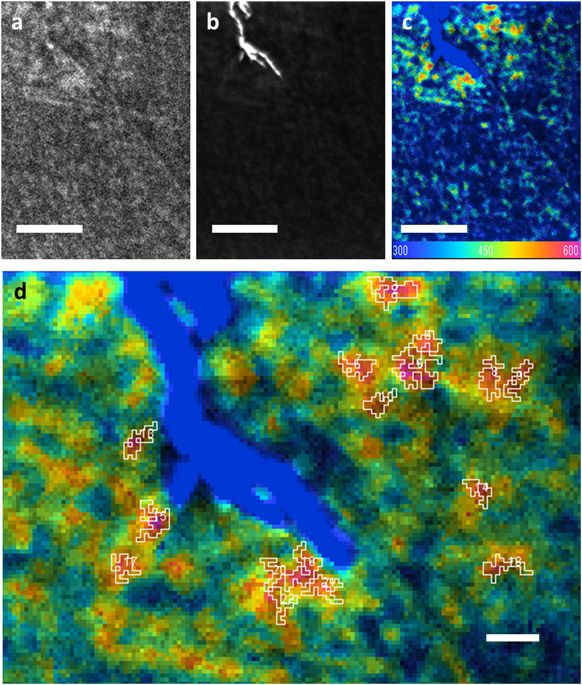npj Materials Degradation ( IF 5.1 ) Pub Date : 2018-01-16 , DOI: 10.1038/s41529-017-0023-0 Greg McMahon , Bryan D. Miller , M. Grace Burke

|
It is irrefutable that the presence of hydrogen reduces the mechanical performance of many metals and alloys used for structural components. Several mechanisms of hydrogen-assisted cracking (HAC) of steels have been postulated. The direct evidence of the mechanisms by which hydrogen embrittles these materials has remained elusive. This is by virtue of our difficulty to directly observe the hydrogen distribution at spatial resolutions less than 100 nm and analysis volumes greater than 1 × 109 atoms at microstructural features such as grain boundaries, dislocations, twins, stacking faults and sub-micron inclusions that are all potential hydrogen trapping sites postulated to be responsible for the degradation of mechanical performance. Here, we report on an experimental methodology combining an elaborate fatigue testing protocol in an enriched gaseous deuterium environment with NanoSIMS (secondary ion mass spectrometry) imaging for detection of deuterium at spatial resolutions as low as 100 nm and accompanying TEM analysis. Type 316 stainless steel compact tension specimens were precharged in deuterium followed by fatigue testing at high stress ratio (0.7), low delta K (~11 MPa √m), and a frequency of 1 cycle per minute using a sawtooth waveform with a rise time of 30 s in high pressure (68.9 MPa) gaseous deuterium (99.999% purity) environment at room temperature. High resolution NanoSIMS imaging was then used to measure the deuterium distribution at the tip of and in the wake of secondary and tertiary fatigue cracks as well as at MnS inclusions. The use of deuterium eliminates the difficulties of interpreting hydrogen measurements by SIMS relating to the ubiquitous presence of hydrogen in all high vacuum systems and guarantees that deuterium measured by the NanoSIMS must be attributed to the fatigue testing protocol. This methodology has allowed us to directly observe the distribution of hydrogen in dislocation tangles ahead and in the wake of fatigue crack tips and at the interface of MnS inclusions. The protocol provides an avenue by which the path and speed with which hydrogen proceeds along its embrittling course of action may be directly followed through modifications of the fatigue testing parameters and/or alloy type and allows a means to validate at least qualitatively recently published models of enhanced hydrogen transport by dislocations.
中文翻译:

高压氘环境下疲劳测试后,高分辨率NanoSIMS成像对316不锈钢样品中氘的分布进行成像
毫无疑问,氢的存在会降低许多用于结构部件的金属和合金的机械性能。推测了钢的氢辅助开裂(HAC)的几种机理。氢脆化这些材料的机理的直接证据仍然难以捉摸。这是由于我们难以直接观察小于100 nm的空间分辨率和大于1×10 9的分析体积的氢分布微观结构特征(例如晶界,位错,孪晶,堆垛层错和亚微米夹杂物)上的原子都是潜在的氢捕获位点,推测是造成机械性能下降的原因。在这里,我们报告了一种实验方法,该方法结合了丰富的气态氘环境中的精细疲劳测试协议与NanoSIMS(二次离子质谱)成像技术,可在低至100 nm的空间分辨率下检测氘并进行TEM分析。将316型不锈钢紧凑型拉伸试样预充入氘,然后在高应力比(0.7),低δK(〜11 MPa√m)和频率为每分钟1个周期的条件下使用锯齿波随上升时间进行疲劳测试。高压(68.9 MPa)气态氘(99。室温下的纯度为999%)。然后使用高分辨率的NanoSIMS成像来测量二次和三次疲劳裂纹以及MnS夹杂物尖端和尾随氘的分布。氘的使用消除了用SIMS解释氢在所有高真空系统中普遍存在的氢测量的困难,并确保必须将NanoSIMS测量的氘归因于疲劳测试规程。这种方法使我们能够直接观察到疲劳裂纹尖端和MnS夹杂物界面中位错缠结中的氢的分布。



























 京公网安备 11010802027423号
京公网安备 11010802027423号